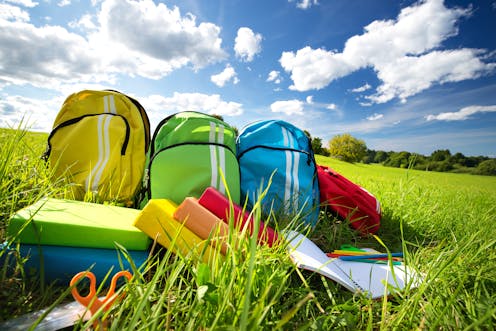 Shutterstock
ShutterstockAustralian schools and teachers are preparing to shift classes online – some independent schools already have. Remote learning is likely to be the norm in the second term and possibly longer.
Even if done well, there are still likely to be learning losses.
Rigorous US studies of online charter schools show students learn less than similar peers in traditional face-to-face schools.
This makes sense, because learning is a social activity. The evidence shows positive effects are stronger where technology is a supplement for teaching, rather than a significant replacement - the situation we face now.
Our disadvantaged students will be hardest hit. Children from poorer households do worse at online learning for a host of reasons; they have less internet access, fewer technological devices, poorer home learning environments and less help from their parents when they get stuck.
Students who are struggling academically are at risk too. Asking students to independently work through large parts of the curriculum online can create extra stresses as it requires them to regulate their own learning pace. Many struggle with this, especially students who are already behind.
Read more: Schools are moving online, but not all children start out digitally equal
To be clear, this is not an argument against online learning. Digital learning offers much potential for schools and students. Several onlineprograms, including digital games, simulations, and computer-aided tutoring show positive results when used to support to learning.
But the success of online initiatives relies on preparation and good implementation. A rapid-fire response to shift teaching online to large populations during a pandemic is unlikely to produce above-average results.
So what should the government do post-COVID-19 when school re-opens to help students bounce back?
Catch-up programs
Many students are likely to be behind, and some will be very far behind. If schools are closed for all of term two, and possibly term three, many students will have a lot to catch up on to move up a grade in 2021. What lies ahead is a difficult and unprecedented situation for our educators.
Governments and schools have several options. Getting struggling students to repeat a year shouldn’t be one of them, unless school closures go much longer than expected. Evidence shows repeating a year is one of the few educational interventions that harms a student academically. Those who repeat a year can become unmotivated, have less self-esteem, miss school and complete homework less often.
A better option is for educators to conduct intensive tuition for small groups, before or after the normal school day. These sessions could be targeted at the most disadvantaged and struggling students in groups of two to five students.
Evidence generally shows the smaller the tuition group, the bigger the effects. One-on-one tutoring has the largest effects in most cases, but given it is more expensive, small group tuition could be tried as a first step.
Read more: Trying to homeschool because of coronavirus? Here are 5 tips to help your child learn
Another option is intensive face-to-face academic programs delivered over a few weeks. These could be similar to what Americans call “summer school” programs, but with a stronger academic focus and targeted at struggling students.
In Australia, these could be run in the week prior to schools re-opening, or over the term three or term four holidays. US evidence shows students who attend summer school programs can gain two months of extra learning progress compared to similar students who do not.
The impacts of summer programs are larger when academically focused and delivered intensively with small group tuition by experienced teachers.
Of course, teachers can also do more during regular face-to-face school lessons to help kids catch up, and the current crises may create extra focus on what teaching practices and programs workbest. But given the likely size of the challenge, additional catch-up measures will still be needed.
The costs would flow back into economy
The costs of these sorts of catch-up programs are significant, but affordable. For example, we calculate providing small-group tuition for half of the students across Australia would cost about A$900 million. This is based on groups of three students receiving 30 minutes of tuition, five times a week, for two full terms, at a cost of $460 per student.
Conducting a three-week intensive summer school for say 800,000 disadvantaged students across Australia would cost about $800 million, assuming a cost of $1,000 per student based on US and UK experiences.
These are not big sums in the scheme of the economic stimulus and rescue package spending for COVID-19. If new catch-up programs cost, let’s say, between $2-4 billion, that is only 3-6% of the federal government’s stimulus measures announced to date.
Read more: COVID-19: what closing schools and childcare centres would mean for parents and casual staff
And the money for summer schools and small group tuition would flow to extra salaries for teachers, providing financial stimulus at a time when the economy really needs it.
No doubt schools and teachers will do their best to continue student learning while schools are closed. And through this process we will also learn a lot about how to do online learning for large populations, and improve along the way.
But despite best efforts, we should prepare for learning losses and plan for catch-up programs.
Julie Sonnemann is also a Board Director of The Song Room.
Authors: Julie Sonnemann, Fellow, Grattan Institute
| < Prev | Next > |
|---|








